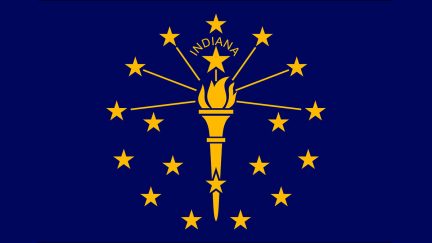Get more! Sign up for PLANSPONSOR newsletters.
Government Workers Leaving Jobs Face Setbacks When Saving for Retirement
The majority of state retirement systems do not provide adequate retirement savings to departing employees, according to data from the Pew Charitable Trusts.
While state pension funds tend to provide robust retirement benefits for government employees, this often does not remain true when workers leave public employment early or mid-career, new research from the Pew Charitable Trusts reveals.
Most state retirement systems provide separating employees with “an inadequate level of retirement savings,” and many employers are hesitant to increase their contributions, according to Pew.
The research examined the 63 state and teacher retirement systems that participate in Social Security. For each retirement system, Pew calculated the savings rate for new plan members. In addition, for the nine state systems offering workers the choice between several plan options, Pew based its analysis on the default plan.
Of the 63 systems studied, 44 were defined benefit plans, four were defined contribution plans, 12 were side-by-side hybrid (with defined benefit and defined contribution components) plans and three were cash balance plans, said Aleena Oberthur, one of the authors of the report and the project director of public sector retirement systems at Pew, in an emailed response.
Oberthur said the research found that employees who separate early or mid-career often only have access to their own contributions to the retirement plan—funds taken from their paychecks—plus some amount of compounded interest on those funds.
In more than two-thirds of the 63 state and teacher retirement systems that Pew analyzed, Oberthur said employees were not able to take some portion of the employer contributions made on their behalf.
“For shorter or midcareer workers who do not have access to any employer contributions at separation, it’s difficult for them to be saving at least 10 or 12% of their annual salary–what experts typically state as necessary to be put on a path to retirement security,” Oberthur said. “On the flip side, when states do provide access to employer contributions, workers are much more likely to leave with adequate savings. Of the 16 retirement systems that provide a savings rate of at least 10%, 12 of those provide employees with some access to employer contributions.”
Low Average Savings Rates
Only seven systems—those in Montana, Georgia, Wisconsin, Nebraska, Arizona, Tennessee and South Dakota—provide a savings rate of at least 12%.
Georgia and Arizona are both new to the list, as increased employee contributions have pushed those state systems above the 12% threshold.
In the past year, Georgia significantly boosted its 401(k) employer match for participants of the Georgia State Employees’ Pension and Savings Plan. According to Pew, Georgia’s plan combines a defined benefit plan with a 401(k) and requires participants to contribute 1.25% of pay to the DB portion. The default contribution to the 401(k) is 5% of pay, but employees can change that amount. Before the recent changes, workers who contributed 5% to the 401(k) received a maximum 3% employer match for a total savings rate of 9.25%, well below the 12% recommendation.
After analyzing the 63 state retirement systems, Pew researchers found that the average savings rate remains stable at around 8% compared to the prior year.
About one-quarter of plans have rates of 6% or less, down from one-third of plans in 2022. However, the researchers said this can be attributed mostly due to mandated employee contribution increases—not increased access to employer contributions.
Lack of Employer Contributions
Pew also found that 13 systems boosted required employee contributions as compared with last year, leading to an increase in their respective savings rates. But again, most of those states did not provide a subsequent increase in available employer contributions.
“Access to greater employer contributions continues to play a key role in pushing savings rates above the benchmarks,” the report stated.
For instance, 12 of 16 systems with a savings rate of at least 10% allow separating workers to take some employer contributions with them, compared with only nine of the 47 systems with savings rates below 10%, according to Pew.
Oberthur said the challenge of managing rising pension costs for unfunded liabilities may have kept many states from making sure that pension benefits adequately covered government employees who change jobs early or mid-career.
“For the majority of states that fell below providing an adequate level of savings, state and local workers could put in years of public service but be left off a path to retirement security,” Oberthur said. “Now with a greater pressure on recruitment and retention, we’ve seen states like Georgia boost retirement savings for public employees to help make sure the state can recruit and keep those workers.”
State employees in Montana were found to have the highest saving rate, at nearly 16%, followed closely behind by Georgia employees and Wisconsin employees and teachers.
How to Increase Savings
To improve savings rates for employees who separate from their job but want to remain in the system until they reach retirement, Oberthur said plan sponsors can provide a mechanism that protects participants’ benefits from being eroded by inflation.
As an example, the South Dakota Retirement System allows vested members who separate to leave their account with the state during the period between their departure from state employment and eligibility to retire. It also provides COLA increases on their account during that period, Oberthur said.
“Another strategy for increasing retirement security for separating employees is to encourage participation in a supplemental saving account, possibly through auto-enrollment or auto-escalation features or by providing an employer match,” Oberthur said. “State retirement systems can also provide participant tools to help educate employees about retirement readiness as well as provide access to retirement plan advisers.”
The Arizona State Retirement System, Public Employee Retirement System of Idaho, Arkansas Public Employees Retirement System and Maine Participating Local Districts all have scheduled increases to their employee contributions in fiscal year 2024. The North Dakota Public Employees Retirement System will also begin enrolling new hires in a defined contribution plan starting January 1, 2025.


